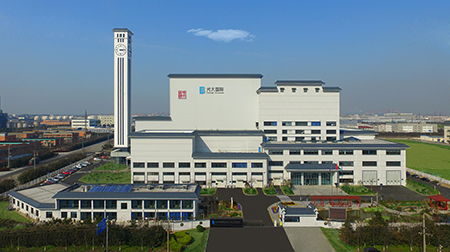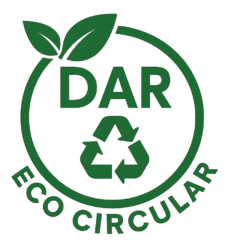Waste-to-Energy (WtE): Powering Dar’s Circular Future
At Dar Eco Circular, we believe no waste should be wasted. Our flagship Waste-to-Energy (WtE) facility at Pemba Mnazi, Kigamboni SEZ, will transform 1,500 tonnes of non-recyclable waste every day into clean electricity, construction materials, and climate action. This is more than just infrastructure—it’s a game-changing step toward a cleaner Dar es Salaam, new jobs for Tanzanians, and a circular economy for East Africa.
🌍 Why Waste-to-Energy Matters
- Landfill Diversion at Scale
Every tonne processed here means less waste at Pugu Kinyamwezi and other dumpsites—cleaner air, healthier communities. - Climate Action, Every Day
By preventing methane from dumps, we’ll cut thousands of tonnes of greenhouse gas emissions each year. - Reliable Green Power
The facility will generate 40–63 MW of renewable electricity—powering local industries in Kigamboni SEZ and supplying excess energy to the TANESCO national grid. - Circular Economy Synergies
Linked to our recycling hubs and anaerobic digestion plants, this facility closes the loop—energy, materials, and nutrients flow back into the economy. - Skills & Jobs for Tanzanians
From engineers to crane operators, the WtE plant will serve as a skills accelerator, creating thousands of green jobs while transferring international know-how.
🔬 How Exactly Does Thermal Treatment Work?
At its core, the Thermal Treatment plant employs proven Moving Grate Incineration (MGI) technology, adapted for high-moisture, mixed MSW streams typical of Dar’s waste. The process ensures safe, efficient combustion, energy recovery, and extraction of valuable materials—while meeting stringent environmental standards. Watch the video below for a clear, step-by-step visual explanation.
🔬 How the Technology Works
Our WtE system is built on Moving Grate Incineration (MGI)—the world’s most proven and bankable technology for large-scale mixed municipal waste. Key features include:
- High-efficiency moving grates, built to handle Dar’s moist, organic-heavy waste.
- Advanced flue gas treatment that meets and exceeds EU 2010/75 standards, ensuring ultra-low emissions.
- A steam-turbine power island, delivering clean, baseload energy 24/7.
- Resource recovery: metals and bottom ash are recycled into construction materials.
📊 Dar’s Waste Challenge in Numbers
- 7.5 million people → Tanzania’s largest urban population.
- 5,600–6,400 tonnes/day → daily municipal waste generated.
- 62–68% organics, 22–28% combustibles, 3–5% recyclables, 3–5% inerts.
- 55–65% moisture content → challenging but ideal for WtE with integrated pre-treatment.
Without WtE, most of this ends up in uncontrolled dumps—polluting rivers, air, and communities. With WtE, it becomes clean energy and urban renewal.
🏭 The Pemba Mnazi WtE Hub
Location: Kigamboni Special Economic Zone (SEZ)
Capacity: 1,500 t/day (Phase 1) → expandable to 4,500 t/day
Net Export: 30–70 MW
Integration: Linked with anaerobic digestion, recycling, and sludge treatment hubs
Community & Environmental Safeguards include:
- Fully enclosed waste reception with odor control
- Buffer zones, green belts, and landscaped site design
- Stormwater and wastewater treatment to NEMC + IFC standards
- Continuous emissions monitoring, publicly reported
🌐 Global Benchmark: Changzhou Xinbei Waste-to-Energy Project
To ensure Dar’s WtE hub meets global best practice, the project draws inspiration from successful models like the Changzhou Xinbei Waste-to-Energy Project (China).

Case Study: Changzhou Xinbei WtE Project (China)
- Capacity: 1,500 t/day (Phases I & II)
- Recognition: AAA-rated project nationally and in Jiangsu Province
- Technology: MARTIN GmbH (Germany) grate furnace system
- Efficiency: Phase I built in just 13 months—a construction record
- Role: Key city facility for harmless, sustainable treatment of municipal waste
This global precedent demonstrates the feasibility, bankability, and scalability of Dar’s own WtE hub — adapting proven technology to African realities.
🌱 Local Impact
- 50–80% reduction in uncontrolled dumping across Dar
- Thousands of direct & indirect jobs created
- Technology transfer to Tanzanian universities and technical institutes
- Investor confidence boosted in climate-smart infrastructure
- A national model for replication in Mwanza, Dodoma, Arusha, and Zanzibar
🚀 Tanzania’s Circular Economy Flagship
This is not just a plant. It’s clean energy for industries, jobs for our youth, dignity for waste workers, and a healthier city for everyone.
With the Pemba Mnazi WtE hub, Dar es Salaam leads Africa in modern, climate-smart urban waste solutions.
Contact us to explore investment, technology, or research partnerships in Waste-to-Energy.

